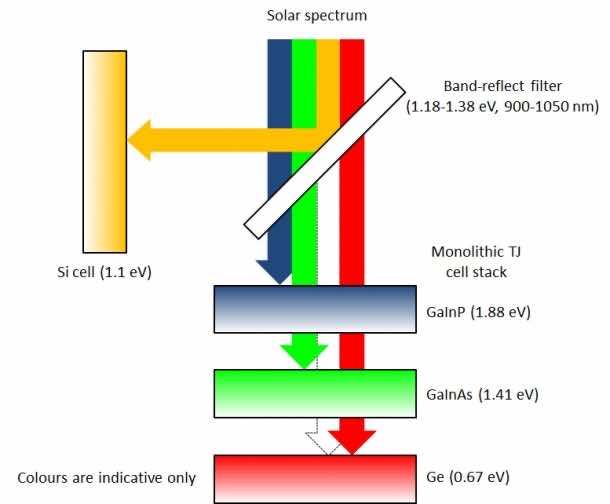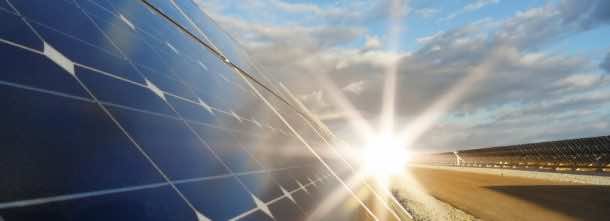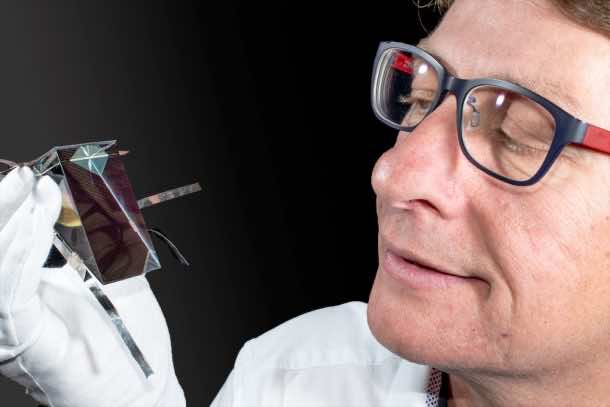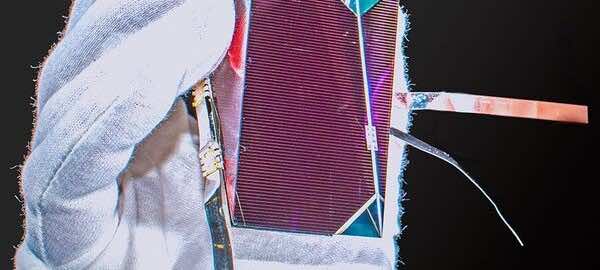The latest technological innovation of the Australian engineers has enabled the scientists to push ever closer to the theoretical limits of the solar energy conversion via the photovoltaic cells.
The device developed by the engineers of the University of New South Wales achieved the efficiency of 34.5% from a 28-centimeter square surface, setting a new world record in energy conversion from non-directed sunlight.
Dr. Mark Keevers and Professor Martin Green, of the Australian Centre for Advanced Photovoltaics at UNSW used an ingenious technique to enhance the energy conversion ratio from each beam of the sunlight. The system uses a four-junction mini-module fixed inside a prism to extricate maximum energy from sunlight.

The device fabricated by the UNSW engineers uses a hybrid four-junction receiver that splits the incoming sun rays into four bands. In this way, more energy can be extracted from the incoming light beams.
The previous recorded maximum energy conversion efficiency was 24% from a larger surface of 800-centimeter square. Commenting on his achievement, Dr. Keevrs said:
“This encouraging result shows that there are still advances to come in photovoltaics research to make solar cells even more efficient. Extracting more energy from every beam of sunlight is critical to reducing the cost of electricity generated by solar cells as it lowers the investment needed, and delivering payback faster.”
As opposed to the 40% conversion rate achieved by using the mirrors to concentrate light, called concentrator photovoltaics or CPV, this latest technique uses the natural, non-directed beam of sunlight.

Green anticipates rapid development in the arena of renewable energy with the focus on enhancing the efficiency.
“So things are moving faster in solar cell efficiency than many experts expected, and that’s good news for solar energy. But we must maintain the pace of photovoltaic research in Australia to ensure that we not only build on such tremendous results, but continue to bring benefits back to Australia.”
The module developed by the engineers comprises of a glass prism with a silicon cell on one face of the prism and a triple-junction solar cell on the other. The triple-junction cell comprises of three layers of indium-gallium-phosphide; indium-gallium-arsenide; and germanium, each targeting a different band of the incoming sun rays.

Thus, each junction only extracts energy from the most efficient wavelength, passing the remaining sunlight onto the next layer. The IR light in the incoming solar beams is transmitted as it is by the triple-junction cell. This unused IR band is reflected back onto the silicon cells to ensure that maximum energy is extracted from the cell.
To create larger panels using this mini-module will result in some loss owing to the interconnection involved in the scale-ups. The theoretical limit of a four-junction device is 53 percent.
At present, the technology is too costly to find its way onto our rooftops, but the research team is working on latest techniques to reduce the manufacturing cost of the device and simplifying the fabrication procedure of these mini-modules.



great! could you please always put the sources?
Please find the original report at this link:
http://newsroom.unsw.edu.au/news/science-tech/milestone-solar-cell-efficiency-unsw-engineers